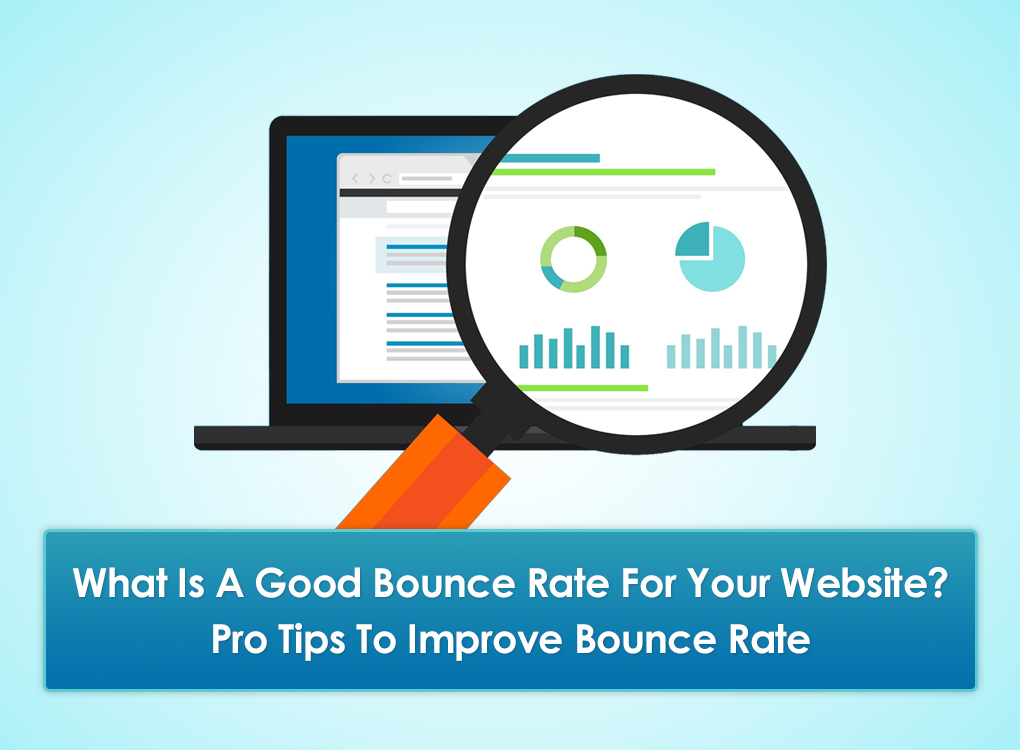What Is A Good Bounce Rate For Website?
As a website owner, it is important to understand the significance of a good bounce rate for your website. A high rate is as bouncy as it sounds and can adversely impact your website in many ways.
Your website’s bounce rate shows how many people visit your website and quickly leave without taking any action or navigating to any other page. A high can negatively affect your search engine ranking and overall website traffic.
So, what is a good bounce rate for your website?
Let’s make an effort to understand what it is and what defines a good.
We will also discuss some pro tips on how to improve your bounce rate to enhance your website’s overall performance.
Let’s jump in!
What Is A Bounce Rate?
A bounce rate is a metric that measures the percentage of visitors who abandon a website after viewing only a single page or without taking any action such as making a purchase or filling out a form and so on. There could be many reasons behind this. That you need to analyze and fix.
There could also be a possibility that a website’s content or design may not be interesting to visitors if bounce rates are high.
Having a high or low bounce rate can indicate many red flags like there could be something wrong with your strategy or irrelevant visitors are visiting your website or maybe the visitors are not getting a good user experience and so on.
A visitor who bounces from your site did not convert. Therefore, you must focus on preventing visitors from bouncing your website so that your conversion rates are improved.
Google ranking factors may also include it. Some studies have also shown a strong relationship between first-page Google results and bounce rate.
Therefore, you must analyze and improve to have a good bounce rate that is not too high or too low.
So, what is a good bounce rate? Keep reading.
What Is A Good Bounce Rate?
High bounce rates differ from one business to another, depending on the company’s goals and the nature of the website. Low bounce rates can also be a potential concern.
A bounce rate of 26% to 70% is considered a typical range. A study by Rocketfuel reveals that most websites will see bounce rates between 26% to 70%.
But still, the right range can vary depending on the website and industry. A bounce rate of 20% or lower could indicate errors such as duplicate analytics code or that something is probably broken on the website.
An excellent bounce rate is between 26-40%. While 41-55% is average. Further, 56-70% can still make sense depending on the kind of website but is considered higher than normal. Lastly, a that ranges from 70% or higher is considered a bad.
For different types of websites, this can vary significantly. For example, for retail websites generally have a 20% to 45% , while B2B websites have a 25% to 55% . Lead generation websites have a 30% to 55% . However, if you’re analyzing email, then a rate of 2% or lower is considered good.
Conducting A/B testing, speeding up your website, and creating high-quality content on the website can improve your website’s bounce rate.
Tips To Improve Bounce Rate
- Make sure that your content on the website has good readability, smooth accessibility, and appealing formatting. Often, a bad readability experience causes the visitor to bounce. Ensure that your content is appealing to read and is in a format that gives less cognitive load.
- Also, make your website mobile-friendly as there will be many users that will be accessing your website from mobile.
- The website design and functionality also play a great role in giving a good user experience. Ensure that your visitors get an overall excellent experience so that they don’t bounce.
- Ensure to reduce immediate and constantly annoying pop-ups on your page to give a better user experience.
- The bounce rate of a website that takes a long time to load is also higher. You can increase your website speed by optimizing images, using a CDN, using VPS or dedicated servers, and reducing the number of plugins, JavaScript, and CSS files. A lot of users have the ability to access the page through website caching.
- Avoid misleading meta titles and meta descriptions that will hinder the trust of your visitor. Your meta title and description should ensure your users receive what they expect on the page.
- Having compelling and very clear CTAs on your website can also reduce the it. It should be so compelling that it makes the user click on it to check what’s on the other page. You can also use some relevant trigger words to do so.
- Add storytelling to your content to engage and hook the visitors to the website. Also, the more conversational your content is, the more interesting it becomes to consume.
- Avoid illogical and irrelevant interlinking on your website.
- Make sure that potential customers do not encounter product pages with an excessive or insufficient amount of information. Spend some time optimizing your product pages to help potential customers to make a purchasing decision.
The Final Say
Do not take a high bounce rate lightly. There are many ways to improve your it, and it all boils down to providing a good user experience, easy navigation, and relevant content.
By doing so, you’ll not only get users to stay on your site but also potentially turn them into loyal customers. Remember, optimizing your website takes time and constant attention, but it’s worth it in the end.
Need extended expert support in improving your website’s bounce rate? Connect with Arista Systems!


